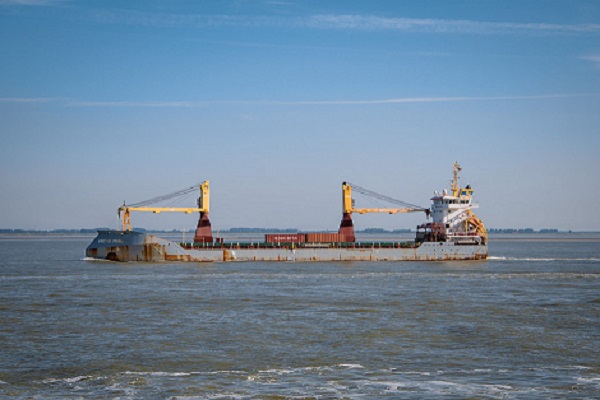Guyana has launched into the energy sector at an historic time as the world begins the energy transition away from predominant fossil fuels to increasing renewable energy use. Starting in 2015, the country rapidly scored several large offshore oil discoveries and is now steadily increasing oil production to exceed 1 million barrels of oil per day by 2027. There is an underlying urgency to produce as much as possible before the demand and possibly price of oil declines. But it is not all about producing as much oil as quickly as possible. According to reputable technical reports from the United Nations Framework Convention on Climate Change (UNFCCC), the survival of the planet is at stake.
In the simplest terms “sustainable energy” refers to energy generation that does not compromise the survival of the environment.
The Energy Chamber of Trinidad and Tobago recently hosted the Caribbean Sustainable Energy Conference (CSEC) to discuss sustainable energy under the theme, “Ideas to Projects”. In continuing the discussion from last week, I will discuss the advancement of hydrogen as an alternative fuel and Carbon Capture and Storage (CCS) to reduce CO2 emissions.
Hydrogen is a clean fuel suitable for long distance transportation and heavy industries where wind and solar are insufficient. It can be stored in liquid form and is lighter than batteries or fossil fuels. Hydrogen is referred to by colors such as blue, green, grey or purple due to its origin and manufacturing process. Green hydrogen is produced by water electrolysis powered by renewable energy. This form of hydrogen was the basis of projects featured by several companies at CSEC. Recently Deloitte estimated that the green hydrogen market will be worth USD 1.4 trillion by 2050 with the demand for global hydrogen growing six-fold by 2050. Along with this expansion, 2 million jobs can be supported annually worldwide.
Natural gas can also be used to produce hydrogen by a process called steam reforming. However, this process emits CO2 which will have to be sequestered — stored in the subsurface or converted to useful products with carbon in permanent solid form — to be considered sustainable. With sequestering, the hydrogen produced is categorized as blue hydrogen, without it the hydrogen is labelled as grey hydrogen. Guyana has the potential to produce green, blue or grey hydrogen. Green hydrogen can be produced using hydropower or any other type of renewable energy. Either blue or grey hydrogen can be produced using excess natural gas brought to shore. As shipping vessels and possibly aircrafts begin to use hydrogen as fuel in the future, Guyana may be well positioned to supply green hydrogen for long distance transportation.
Carbon Capture Utilization and Storage (CCUS) is a large-scale solution for reducing CO2 emissions. Basically, CO2 is collected (captured) at the source of emissions. It can then be utilized in another process where the carbon atoms are integrated into a solid product such as concrete or plastic, permanently removing it from the atmosphere. Alternatively, it can be stored in the subsurface, deep underground by injecting it into saline (salt water) aquifers or depleted hydrocarbon reservoirs. This technology has been in use in the Sleipner Field, North Sea, offshore Norway for two decades. Continuous monitoring has shown that the injected CO2 is trapped within the rock pores. There is nothing new about CO2 being stored in the subsurface as this occurs naturally in Colorado and New Mexico, US for example. CO2 injection is not new to oil production operations; this process is used to enhance heavy oil recovery for over sixty years.
I was fortunate to be invited to speak on a panel at CSEC 2023. In my presentation I outlined three things Caribbean countries ought to consider before embarking on CCUS projects:
National Development Priorities
Developed countries, like Norway, which have energy, food and water security with adequate healthcare, education and infrastructure provided for citizens, are able to place CO2 emission reduction as a top priority. Typically, these countries also have decades of historically high emissions. It has been difficult for developing countries, with historically miniscule CO2 emissions, to fund climate adaptation projects and finance CO2 emission reduction projects. They are forced, however, to grapple with the effects of climate change as they face more extreme and frequent climatic events such as changing rainfall patterns, floods, drought and storms. Nevertheless, investing in CCUS technology and projects can increase revenue potential for offsetting carbon emissions or decarbonizing an activity or operation. In this way, CCUS can be viable and accepted in countries like Guyana.
Public Awareness
Public awareness and acceptance are critical to the success of CCUS especially if pipeline transport on land is required. The general public and policy makers need to have a clear understanding of the science behind CCUS. They need to have confidence that CO2 can be safely captured, transported, injected and permanently stored. After conducting research on the engineering aspects of CCS, I spent almost 15 years writing and making presentations about CCUS to a wide audience that included economists, political scientists, investment bankers, social scientists, historians and project managers. I realized it was not enough to make technical presentations to engineers and geoscientists. I dedicated efforts to public awareness because I believe it is better to discuss the risks and rewards of CCUS before it becomes a contentious subject. In Guyana CCUS is not a front burner topic yet but it will come into focus as natural gas comes to shore.
Mission and Objectives for CCUS
A clear mission and objectives are needed for any project. It is important not to lose sight of the fundamental reasons for deploying CCUS in each particular national circumstance. CCUS can reduce CO2 emissions but in regions with a low carbon footprint, the emission reduction impact is negligible. Therefore, each project involving CCUS must be based on SMART (Specific, Measurable, Achievable, Relevant and Time-Bound) goals that tie into a broader vision and a clear mission that serves national interest. If this fundamental step is overlooked, and it can happen quite easily, projects may serve external demands with no real impact while jeopardizing urgent domestic needs.
Finally, in both developing and developed countries, hydrogen and CCUS projects are unique opportunities for the energy sector to establish new industries, create employment for environmentally conscious young professionals and provide impactful, innovative solutions for providing sustainable energy.



